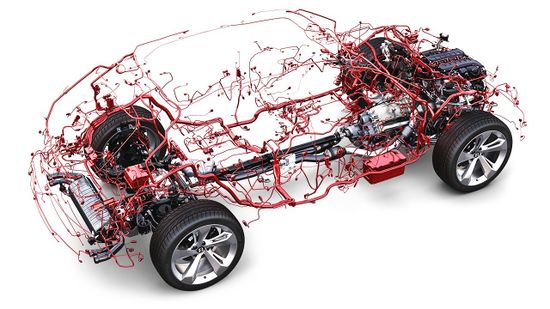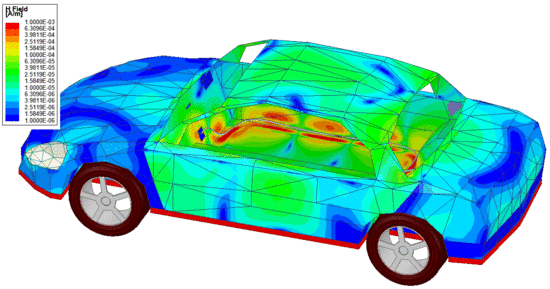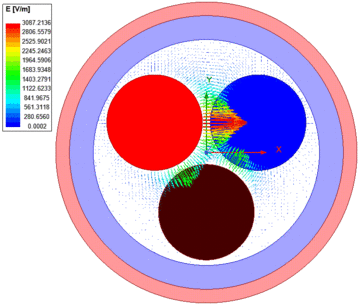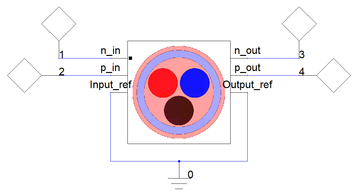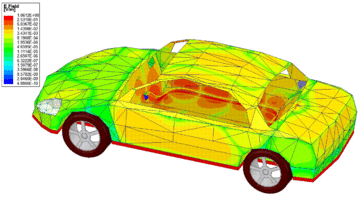Difference between revisions of "Lecture 4. - Assignment"
(→Car Body with Cable Harness (ANSYS HFSS)) |
|||
| Line 126: | Line 126: | ||
=== Car Body with Cable Harness (''ANSYS HFSS'') === | === Car Body with Cable Harness (''ANSYS HFSS'') === | ||
| − | |||
== References == | == References == | ||
{{reflist}} | {{reflist}} | ||
Revision as of 19:48, 27 March 2019
|
Cable Harness Analysis | |
| Whole wiring of a vehicle. | The magnetic field intensity in the wire and in the car body. [Click to see animation.] |
|
Instructor
|
Teaching Assistants:
|
Contents
Purpose of the Assignment
The student will learn the main steps of the finite element method, such as preparing the model (creating or importing geometry), specifying material parameters, boundary conditions, and excitation through a full-wave problem. This example gives a brief insight into the cable harness analysis through an automotive example.
Knowledge needed to solve the problem
- The steps of the finite element method;
- Theoretical knowledge of full-wave fields (for defining materials, excitation);
- Basic knowledge of electric network theory.
Steps to solve the problem
After launching ANSYS Electronics Desktop, open the file CableHarness_Example.aedt using the File [math] \to [/math] Open menu.
To use ANSYS 2D Extractor, ANSYS HFSS and ANSYS Circuit, the Help menu and YouTube videos provide a lot of help.
Defining the Problem
In this case, the whole problem is pre-defined. The reason for this is to avoid lengthy setup and basically, the purpose of the example is to look at the effect of high-frequency cables for the car body. Thanks to this example, students explain why you need to pay attention to the proper cable routing in vehicles. However, we review the structure of this task.
The problem is split into three parts:
- The analysis of cable (ANSYS 2D Extractor);
- the set up of cable harness electric circuit (ANSYS Circuit);
- and the high-frequency analysis of the car body with cable harness (ANSYS HFSS).
Before and during the run, we briefly review the settings of the problem.
It is important to note that in the previous two examples, adaptive meshing used. However, in the case of a time-dependent (transient) problem, it is not possible to use the adaptive mesh, so we need to define the discretization of the problem with different mesh operations.
Analysis of Cable Parasitics (ANSYS 2D Extractor)
ANSYS 2D Extractor efficiently performs the 2D quasi-static electromagnetic field simulations (ANSYS Q3D Extractor for 3D problems) required for the extraction of RLCG parameters (R - resistance, L - inductance, C - capacitance, G - conductance) from an interconnect structure.
As you can see in the figure, the cable has positive, negative and return veins. The veins wrapped by insulation and the outer sheath.
The simulation frequency is 300 MHz and the result of the analysis is shown in the following tables.
|
| ||||||||||||||||||
|
|
Driving Circuit of Cable Harness (ANSYS Circuit)
The return path is grounded, while a port with 50[math]\Omega[/math] terminal impedance is defined for the negative and positive conductor. The parasitic parameters of the cable veins are coming from the 2D Extractor simulation. The results of this circuit simulation are used as the excitation of finite element simulation.
